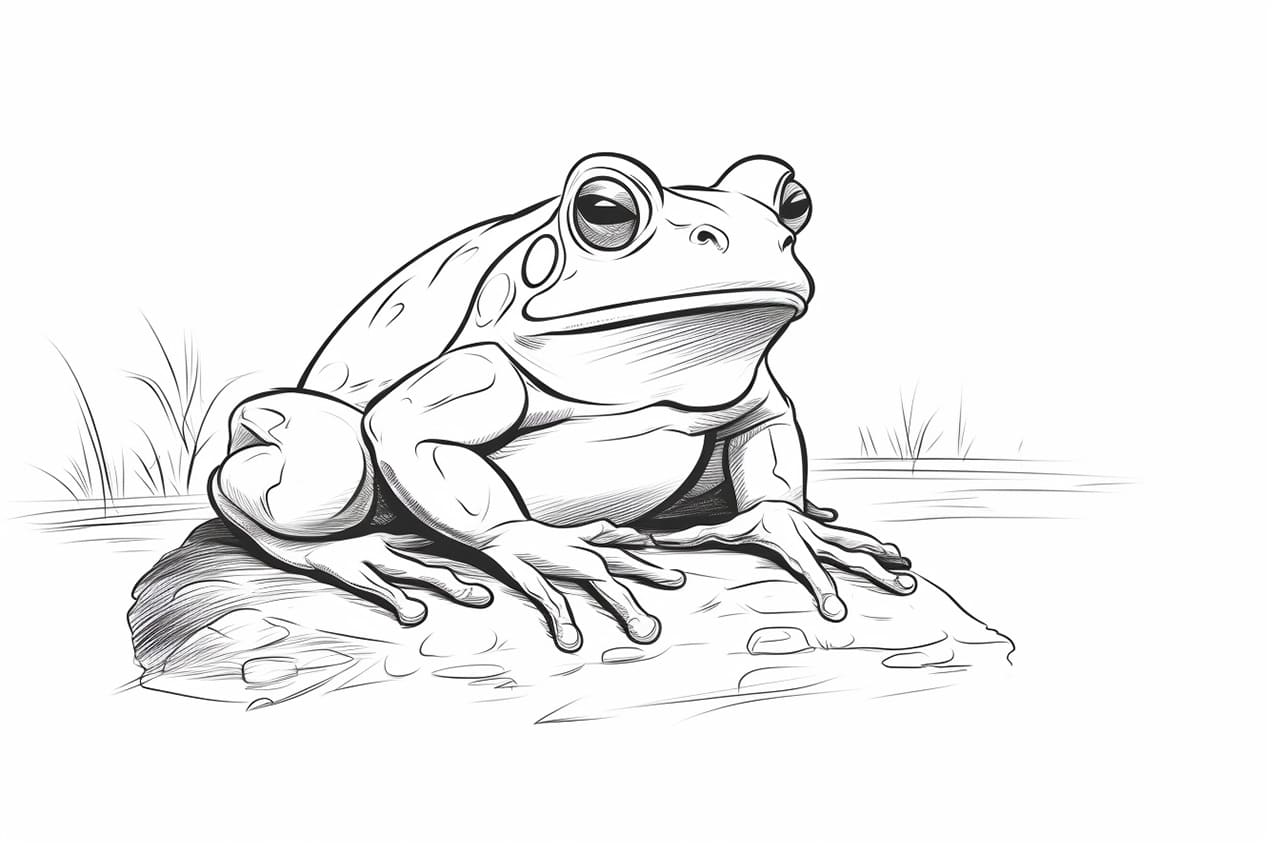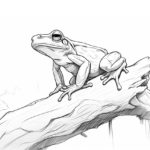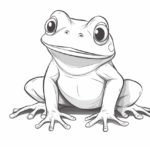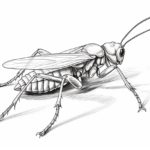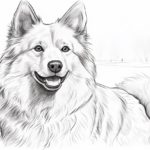Welcome to this step-by-step guide on how to draw a frog. Whether you’re a beginner or an experienced artist, this tutorial will walk you through the process of creating a realistic and detailed frog drawing. So grab your drawing materials and let’s get started!
Materials Required
Before we begin, make sure you have the following materials ready:
- Drawing paper or sketchbook
- Pencil (preferably an HB or 2B pencil)
- Eraser
- Fine-tip black pen or marker (optional, for outlining)
Now that you have all the necessary materials, let’s dive into the step-by-step process of drawing a frog.
Step 1: Basic Shapes
Start by drawing an oval shape for the body of the frog. This will serve as the foundation for the rest of the drawing. Then, add two smaller circles on top of the oval for the frog’s eyes. Position them slightly towards the top and center of the oval.
Step 2: Eyes and Nostrils
Inside the circles, draw smaller ovals to represent the irises of the frog’s eyes. Add pupils to the irises by drawing small circles or ovals. Next, place two small dots above the eyes to indicate the nostrils of the frog.
Step 3: Legs and Feet
Extend two curved lines from the bottom of the oval to form the front legs of the frog. Add three toes to each front foot by drawing small curved lines. Repeat the process for the hind legs, using larger curved lines and adding longer toes.
Step 4: Mouth and Details
Draw a curved line beneath the eyes to represent the frog’s mouth. Add a small line to indicate the upper lip and a longer line for the lower lip. To give the frog a more realistic appearance, add some bumps or warts on its body. You can do this by drawing small irregular shapes or circles throughout the frog’s skin.
Step 5: Shadows and Highlights
Now that you have the basic frog shape, it’s time to add some depth with shading. Start by identifying the light source in your drawing, which will determine where the shadows and highlights should be. Use your pencil to darken the areas that are away from the light source, creating shadows. Lightly shade the areas that receive direct light to create highlights.
Step 6: Refine the Details
Take a closer look at your drawing and make any necessary adjustments. Add more details to the frog’s body, such as additional bumps or texture lines. Pay attention to the proportions and make sure everything looks balanced.
Step 7: Outlining (Optional)
If you want to make your frog drawing stand out, you can use a fine-tip black pen or marker to outline the main features. This step is optional and depends on your personal style and preference. If you choose to outline, do it carefully and confidently to create a clean and bold look.
Conclusion
Congratulations! You have successfully learned how to draw a frog. Following these step-by-step instructions, you can create a realistic and detailed frog drawing. Remember to take your time and practice regularly to improve your skills. Happy drawing!
Want to learn how to draw different types of frogs? Try our tutorials on how to draw a tree frog and how to draw a bullfrog.
Fun Facts About Frogs
- Frogs are amphibians, which means they live both in water and on land.
- Some frogs can jump over 20 times their body length in one leap.
- Frogs do not drink water like humans do; instead, they absorb water through their skin.
- Frogs have long, sticky tongues that they use to catch insects and other prey.
- Some frogs can change color to blend in with their surroundings as a form of camouflage.
- Frogs do not have ears like humans; instead, they use their skin and lungs to hear.
- The study of frogs is known as herpetology.
- Frogs go through a process called metamorphosis, where they start as tadpoles and eventually develop into adult frogs.
- There are over 6,000 species of frogs found all over the world, except in Antarctica.
- Frogs play an essential role in the ecosystem by controlling insect populations and serving as a food source for other animals.
Suggestions for Scenes and Settings for Frog Drawings
Certainly! Here are some suggestions for scenes and settings for drawings of frogs:
- Lily pad pond: Draw a frog sitting on a vibrant green lily pad surrounded by colorful flowers and dragonflies buzzing around.
- Rainforest tree: Illustrate a tree frog clinging to a branch in a lush, tropical rainforest setting with exotic plants and cascading waterfalls in the background.
- Urban alleyway: Create a gritty urban scene with a streetwise frog navigating a city alleyway filled with graffiti, trash cans, and flickering streetlights.
- Underwater world: Imagine a whimsical underwater scene with a frog swimming among coral reefs, sea anemones, and schools of colorful fish.
- Moonlit swamp: Capture the mysterious beauty of a frog croaking under a full moon in a misty swamp teeming with fireflies, cattails, and twisted gnarled trees.
- Desert oasis: Picture a desert oasis where a frog seeks refuge in a lush palm grove surrounded by golden sand dunes and a shimmering mirage in the distance.
- Enchanted forest: Transport your viewers to an enchanted forest where an elegant frog prince lounges on a mossy log under a canopy of sparkling fairy lights and glowing mushrooms.
- Arctic tundra: Depict a resilient frog adapting to the icy landscape of the Arctic tundra, camouflaged among snowdrifts, frost-covered rocks, and the shimmering Northern Lights.
- Japanese garden: Draw a serene Japanese garden with a contemplative frog meditating by a tranquil koi pond amidst bonsai trees, Zen rock formations, and a wooden bridge.
- Fantasy realm: Let your imagination run wild and create a fantastical realm where frogs ride on the backs of giant snails, soar through the sky on dragonflies, and explore magical forests filled with mystical creatures.

